Fiber Arts Take Over a Former Seaport Warehouse in NYC
See waterfalls of fabric, intricate threadwork, massive tapestries, and more!


New York City has been a hub of artistic endeavors and creativity since its inception and as a result, the city, the art, and the theater scenes have rapidly evolved and reinvented themselves to keep up with the changing times. Countless NYC theaters have come and gone, found new uses, and been forgotten to time. Here, we revive 15 of Manhattan’s grand performance and motion picture palaces that have been demolished.
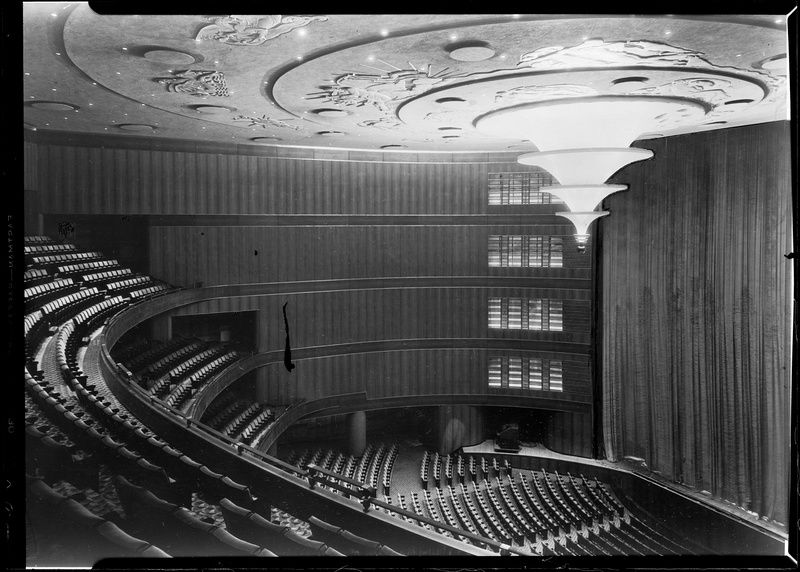
The RKO Roxy Theatre, later known as the Center Theatre, is the long-lost companion of Radio City Music Hall. Construction started on the theater at 1230 Sixth Avenue, just a block away from the Music Hall, in 1930. Designed by noted architect Edward Durell Stone and named after theater impresario Samuel “Roxy” Rothafel, the theater was always meant to show films rather than live performances. The Art Deco Roxy was very similar in style to Radio City, with a limestone construction, tall vertical marquees, a modernist aesthetic, and even works of art by muralist Hildreth Meière, though the Roxy was about half the size.
Inside, the most impressive feature of the Roxy was the chandelier which hung above the main auditorium seats. Reported to be the largest light fixture in the world at the time, it weighed six and a half tons, measured 30 feet in diameter, and had four different color settings (amber, red, green, and blu). More than a hundred floodlamps and dozens of spotlights shone from inside the three-tier fixture that was surrounded by relief sculptures of gods and goddesses designed by Rene P. Chambellan with the Italian sculptor Oronzio Maldarelli.
The Roxy struggled to turn a profit for most of its existence, vacillating between showing live performances and motion pictures. In 1940, as John D. Rockefeller drove the last bolt into Rockefeller Center, the Roxy showed its final film (Disney’s Pinocchio). The space later hosted live ice skating shows and served for a time as a television studio before it was demolished in 1955. It was replaced by an annex of the U.S. Rubber Building designed by Harrison & Abramowitz on the southeast corner of West 49th Street.
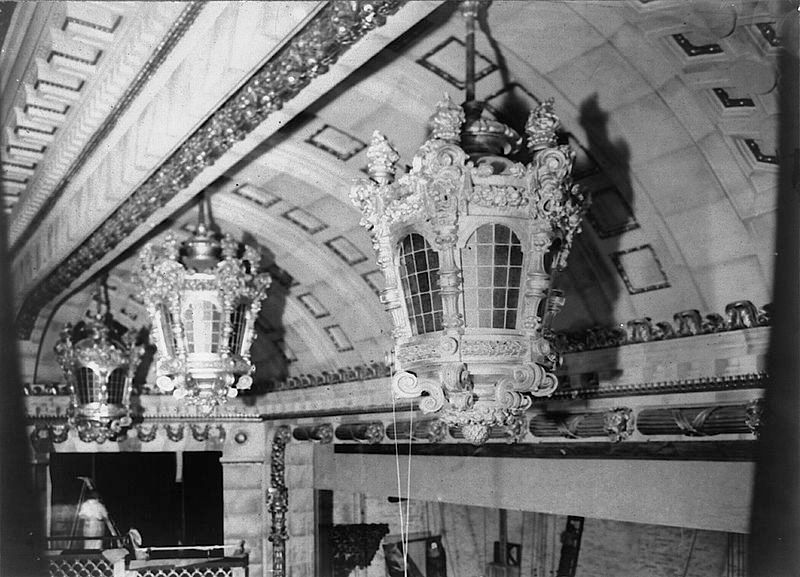
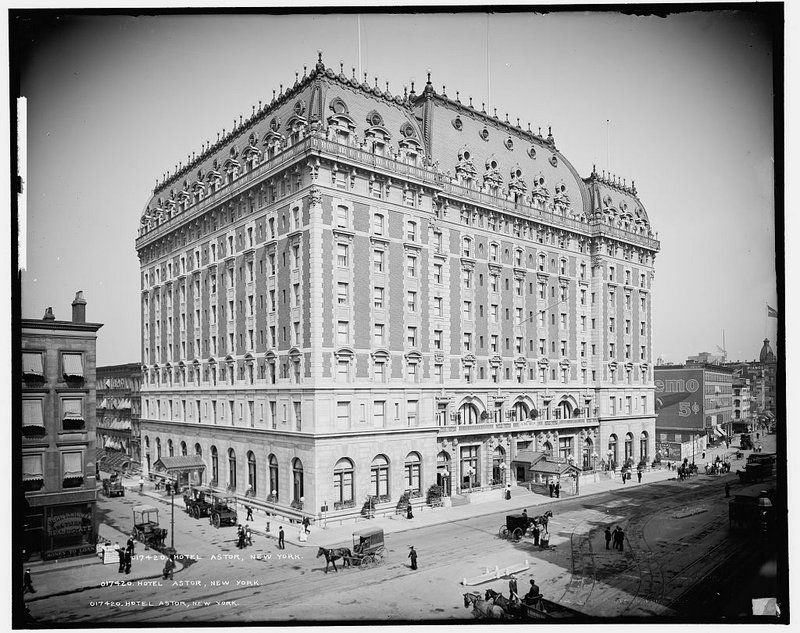
The Astor, a Neo-Classical and Second Empire-styled theater within the Hotel Astor, was designed by George Keister and built on Broadway at Forty-fifth Street. The Hotel Astor had a green copper mansard roof, a Louis XV-style Rococo ballroom, and a rooftop garden for entertainment, drinking, and dining. While the Astor Theatre only remained a performance theater from 1906 to 1925, it made its mark on Broadway with over 21,000 shows including Why Mary?, which won the first Pulitzer Prize for drama. The first production in the Astor was A Midsummer Night’s Dream, which starred Annie Russell.
Like many Broadway theaters, it suffered the fate of becoming a movie theater in 1925. The Astor served as a “roadshow” theater for MGM Studios, meaning it would take part in a small number of first-time screenings in big cities before the general release. Two notable films that made their debut at the Astor are Gone With the Wind and Grand Hotel.
The Astor closed in 1972 because the old building had maintenance issues. It was slated to be destroyed and turned into an office tower along with several other theaters on the block, but the community intent on preserving the integrity of the theater fought against its destruction for twelve years. They were unsuccessful and the Astor, the Helen Hayes Theatre, the Morosco Theatre, and the Bijou Theatre were torn down to build the Marriott Marquis Hotel. The hotel itself lives on in an illustration on Dr. Brown’s Soda cans.
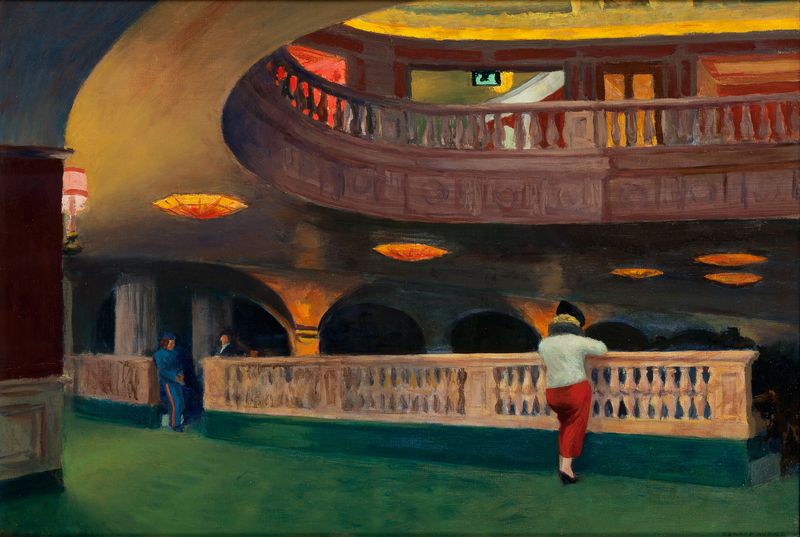
Opened in September 1921, the 2,342-seat Loew’s Sheridan Theatre was originally called the Mark Strand Sheridan Square Theatre. It was located at 7th Avenue and West 12th Street in Greenwich Village, now the site of St. Vincent’s Triangle and the NYC Aids Memorial. The theater was frequented by painter Edward Hopper, who immortalized the interior in one of his paintings. The theater closed in June 1969 and was soon purchased by St. Vincent’s Hospital with the intention of building nurses’ housing. It was demolished in August 1968.
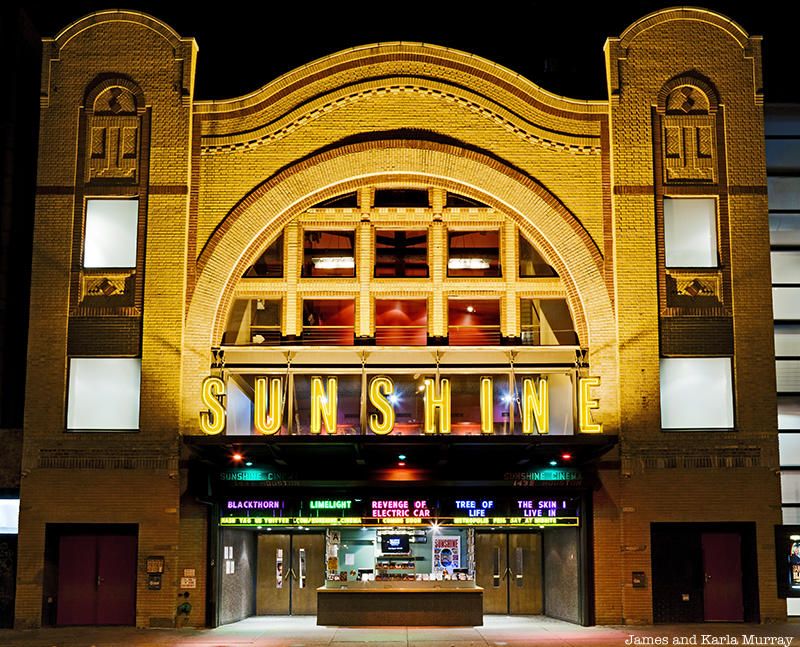
Sunshine Cinemas wasn’t originally built as a theater. This building at 141 Houston Street started out as the Dutch Reformed Church in the mid-1800s. At the turn of the 20th century, it was converted into a prize fight club called the Houston Athletic Club, according to the New York Times. Less than a decade later it was converted into a theater, the Houston Hippodrome, by Charles Steiner and Abraham Minsky. The Sunshine name came in 1917.
When the Great Depression hit, the theater closed for over 50 years, during which time it was used as a storage facility. Finally, in 2001, after a three-year renovation by Landmark Theatres, it reopened as a theater showing independent and art house films. After the rising rent prices became untenable, this beloved Lower East Side spot was sold to a developer and demolished in 2018. It has since been replaced by a glass tower designed by Roger Ferris.
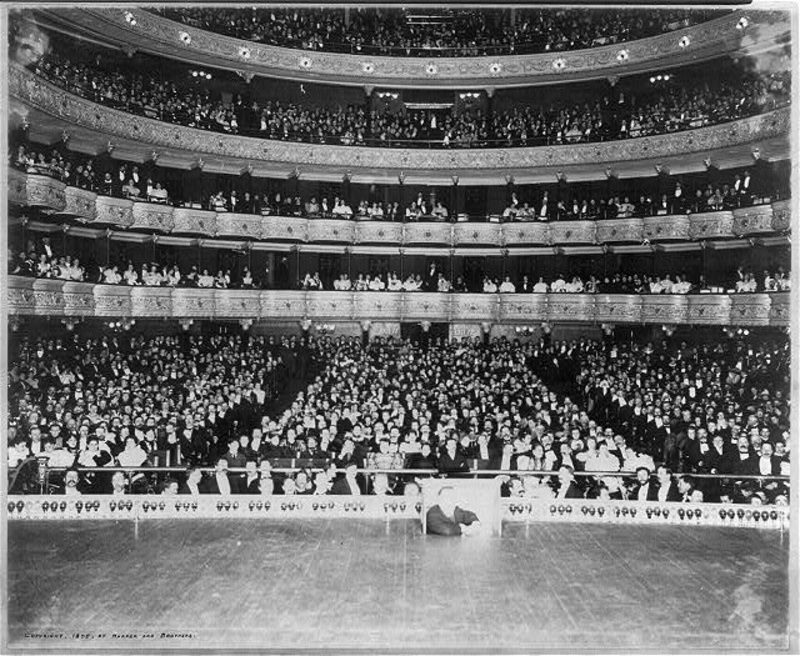
The original Metropolitan Opera House opened its doors on October 22, 1883, on Thirty-ninth and Broadway. The architect, J. Cleveland Cady was responsible for the design of the building. After a fire in 1892, architects John Carrére and Thomas Hastings redesigned the lavish interior. They created a gold auditorium that included the largest proscenium in America at the time, inscribed with the names of six composers: Beethoven, Gluck, Gounod, Mozart, Verdi, and Wagner. The famous gold damask stage curtain was not installed until 1906. The two architects also restored its Diamond Horseshoe box seats where the Vanderbilts and Astors watched the performances, along with five thousand others.
Operas were performed in this theater up until April 1966. There were several plans in place to save the Met Opera House from demolition, including the attempt to raise $8 million dollars and an effort to declare the building a city landmark by the Metropolitan Opera Association. Both attempts failed and fearing another company taking over the building, The Metropolitan Opera Management fought and sued to have their own building destroyed. They got their wish in 1967 a year after the new Metropolitan Opera House opened at the Lincoln Center.
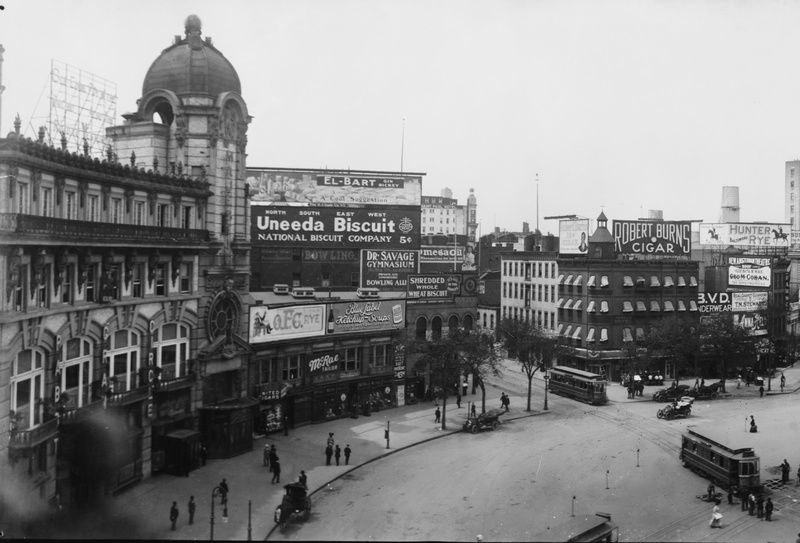
Columbus Circle once had a row of Victorian-style buildings, none of which survive today. On the right of this photograph was the Pabst Grand Circle and the Majestic Theatre, built for the Pabst Brewing Company in 1803. In this photograph, the sign above the building advertises Majestic Theatre’s production of “Babes in Toyland.” The complex was demolished in 1954 and replaced by the New York Coliseum, a convention center that was demolished in 2000. Today it is the site of the Time Warner Center, which opened in 2004.
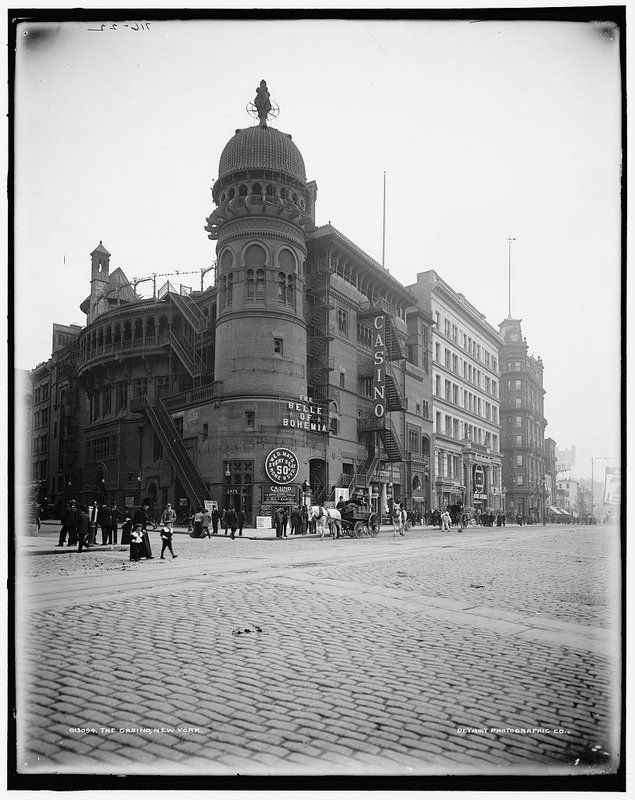
Located on Broadway at Thirty-ninth Street, the Casino Theatre was the first theater in what is now considered the Broadway District. Back when the Casino Theater was built, the theater district was between 23rd Street and Union Square. Casino Theater was built for Rudolph Aronson and opened on October 21, 1882. The theater caught on fire in 1905 and the Shuberts, who took over two years prior, had to rebuild.
After the fire, Casino Theatre put on the hit musical The Earl and the Girl. The theater did well for itself during its initial three decades but there were many newer theaters that had been built in the area. The Casino Theatre was torn down in February of 1930 and turned into clothing stores.
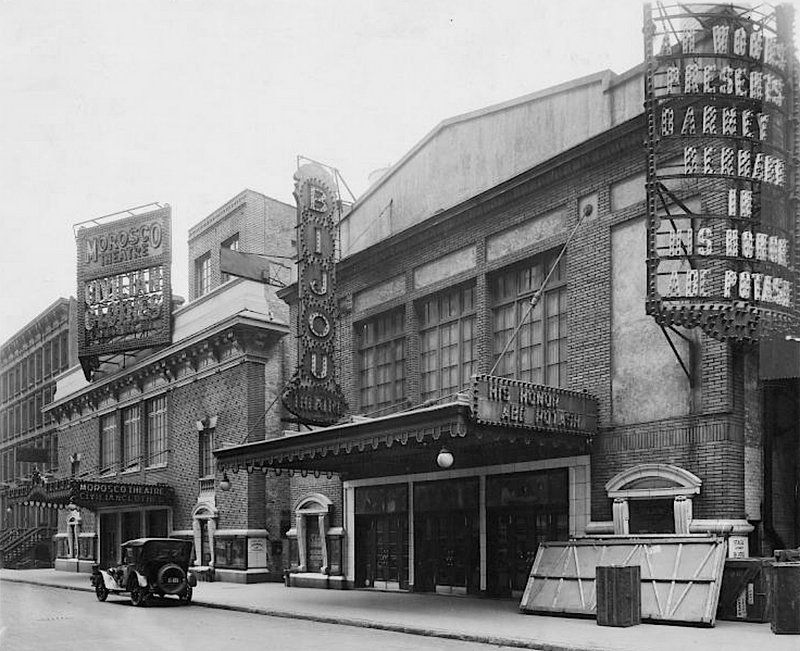
Bijou Theatre, the smallest of the Shubert theatres was designed by Herbert J. Krapp and was built in 1917 on Forty-fifth Street. While the theater mostly showcased plays by writers like Anton Chekhov, Henrik Ibsen, and Sacha Guitry, it was one of three theaters that premiered the musical Fancy Free. Emerging from its comfort zone once in 1950, it showed one film, Cyrano De Bergerac. A year later, Bijou Theatre became a CBS radio station and was later renamed D.W. Griffith Theatre to showcase art films. The theater took up the name Bijou Theatre once again in 1965 until was torn down in 1982 for the Mariott Marquis Hotel.
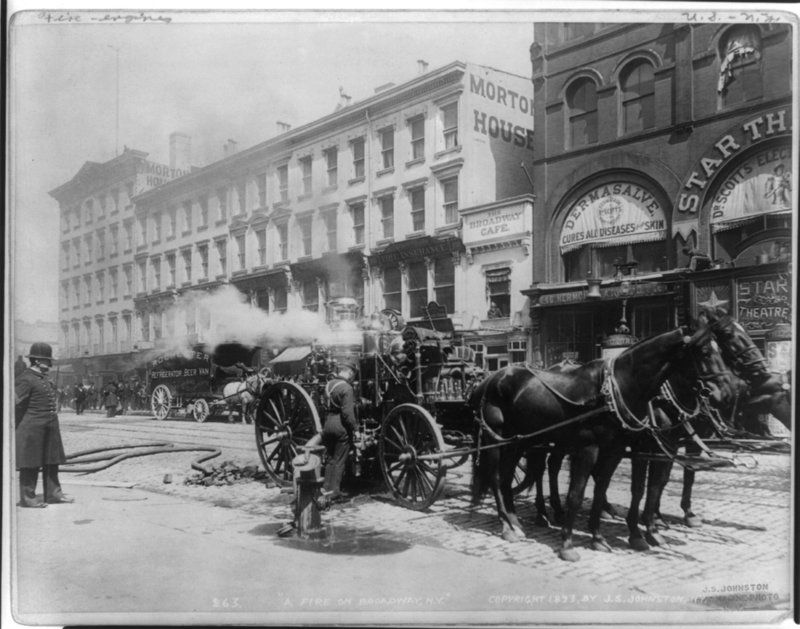
Like most historic theaters in New York City, Wallack’s Theatre, located on Broadway at Thirteenth Street, had a bit of an identity crisis since its opening on September 25, 1861. In 1881, it was renamed The Germania Theatre. Only two years later, it was changed again to the Star Theatre. The German Romanesque theater was opened by actor James William Wallack and was originally named after his son, actor John Johnstone Wallack. Like the theater that was named after him, Wallack has gone by several names including Allan Field and John Lester Wallack.
James Wallack appeared for the last time on any stage at the opening of the comedy, The New President, when he addressed his theater for the first time. Wallack’s Theatre was known for booking some of the most prominent names in theater at the time, including John Gilbert, Helen Tracy, and Frederic Robinson. Following the success of the first theater, another Wallack’s Theatre was built on Thirtieth Street and Broadway. Four Broadway theaters once bore the name Wallack’s Theatre and none are left standing today. The Star Theatre was sent off with The Man-o’-War’s Man starring Thomas E. Shea as its final show on April 20, 1901. Destruction of the theater began that same April and the demolition was recorded in time-lapse.
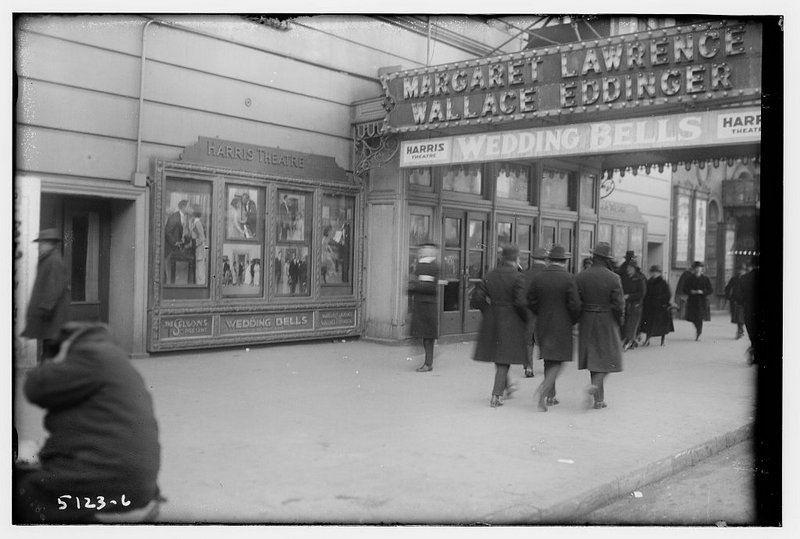
The Candler Theatre was a five-story office building on West Forty-second Street. The outside of the theater was lacking in pizazz, but the Italian Renaissance-style theater, with its elliptical dome and use of marble, made the inside look larger than life. The Candler remained a live theater from 1914 to 1933 with varying degrees of success. It only took two years for Candler Theatre to be renamed Cohan and Harris Theatre when the Candler family (the creators of Coca-Cola) leased it out. It was renamed Harris Theatre shortly after. It finally made its mark when John Barrymore played Hamlet for the 101st night in a row, beating out Edwin Booth’s previous record of 100 nights.
The final performance at Harris Theatre lacked success and the theater was turned into a movie theater while it was slowly stripped of its iconic interior. The Harris Movie Theatre functioned until 1994 when it closed. It was demolished in 1996 to make way for the Madame Tussauds Wax Museum – much to the dismay of protestors who had hoped it would be restored to a performance theater again like the New Amsterdam Theatre was.
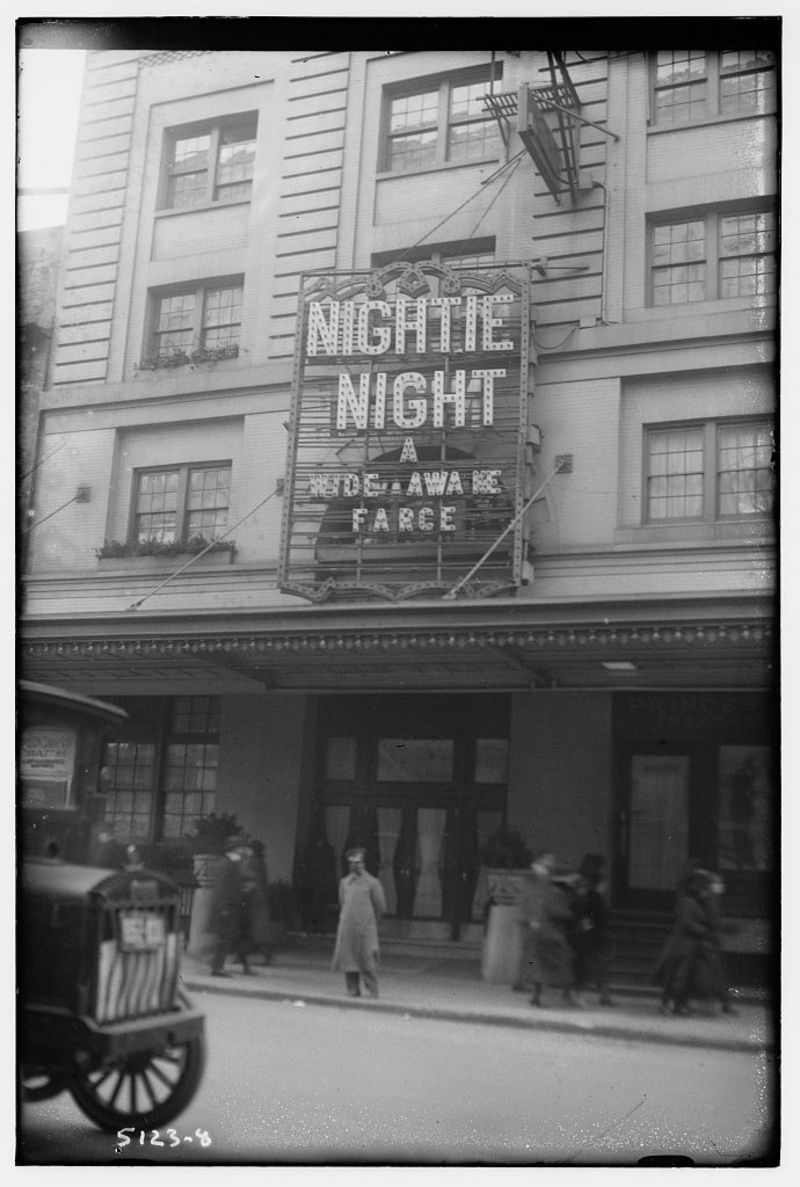
The Princess, located on Thirty-ninth Street, was among the smallest Broadway theaters when it opened in 1913. The outside of The Princess may have been reminiscent of a tall office building but the theater’s musical comedies from 1915 to the early ’20s were anything but boring. The inside of the building was a sharp contrast to the outside with its Georgian and French Renaissance styles, antique French tapestries, and neoclassical plasterwork.
The Princess was built for one-act dramatic plays, but also showed musical comedies, and then switched back to dramas in its final seven years before it was sold to The New York Assembly. It had a brief stint as the Assembly Theatre before it closed within a year. The Princess went through several different owners and functions after that. It was turned into a movie theater, a recreation center, a performance theater once more, and finally a movie theater again until it was torn down in 1955.
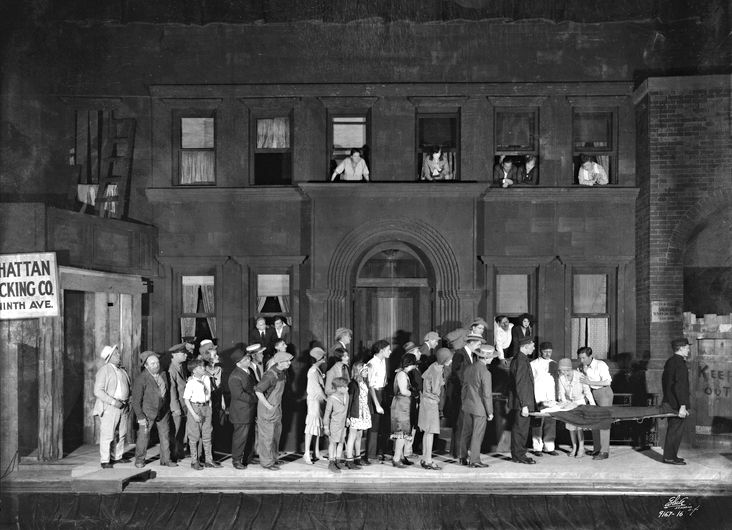
The first theater on Forty-eighth Street was the Playhouse Theatre built in 1911 for William A. Brady. In 1929, the theater performed Elmer Rice’s Street Scene, which went on to win a Pulitzer Prize. Upon Brady’s death in 1944, the theater was sold to the Shuberts. Surprisingly, the theater’s name remained the same and the Shuberts’ management made way for the theater’s most famous production, William Gibson’s The Miracle Worker, starring Patty Duke and Anne Bancroft. The theater eventually became an ABC radio station. Instead of turning into a movie theater, Playhouse Theatre made it onto the big screen as a set in 1968 with Mel Brooks’ The Producers. The theater was demolished the following year.
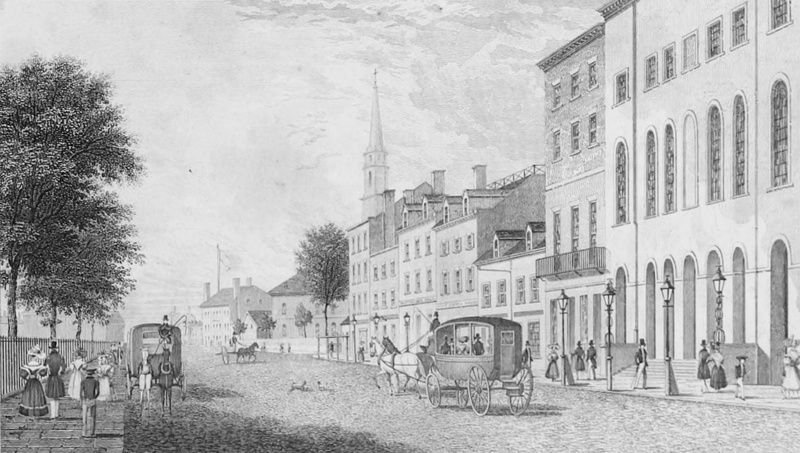
The Park Theatre, built on Park Row in 1798 by Mark Isambard Brunel, (the engineer and builder of the London Thames tunnel), is regarded as the first piece of Broadway’s puzzle. The stone theater was three stories high, seated 2,000 people, and the interior color scheme was pink and gold. In true 1700s fashion, women were not allowed in the first or second tiers unless they had a man on their arm. The highest ticket price for a box seat was one dollar, which roughly translates to about nineteen dollars today. In modern times, nineteen dollars generally won’t even get someone a mostly obstructed view in a Broadway theater.
Park Theatre literally put Shakespeare on a pedestal when the theater erected a statue of the Bard on a pedestal. Fitting into their Shakespearean theme, the theater opened with his play, As You Like It. The destruction of Park Theatre was unintentional not once, but twice when it burned down in 1820, was rebuilt, and burned down a final time in 1848. While Park Theatre didn’t last very long, its popularity paved the way for Broadway to become the prominent and integral part of New York City that it is today. While these theaters no longer exist, their legacy is preserved through advancements in architecture, innovation, and evolved subject matter. Their presence remains strong in the Broadway and Off-Broadway theaters that are still standing today.
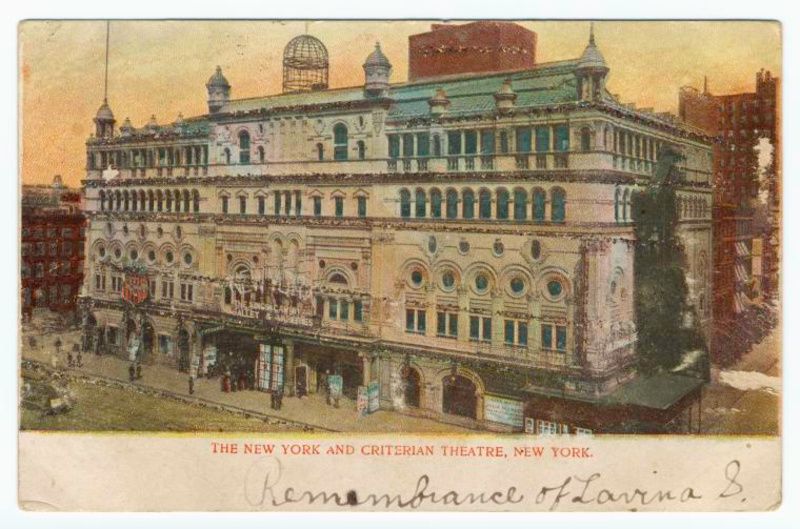
Oscar Hammerstein’s Indiana Limestone theater building extended hundreds of feet across Longacre Square (now Times Square) between Forty-fifth Street and Forty-fourth Street. Opened in 1895, it was known as The Olympia or Hamemrstein’s Olympia – the same name as Hammerstein’s son. It boasted a music hall called the Lyric, a roof garden, and a concert hall. The Lyric Theatre was decked out in Louis XIV-style decorations in predominately blue and gold hues. The Lyric was only open for three years before a bankrupt Hammerstein sold the Olympia and the theater became Criterion Theatre.
The Criterion was ever-changing in both name and focus. It eventually became one of Broadway‘s first “movie palaces” for movie-musical releases. In 1935, the Olympia was demolished in order to make room for more modern buildings, including a new Criterion Theatre. When buildings are renovated or even demolished, the original structures aren’t always completely destroyed. It’s easier to build a new building on top of one that has some of its foundations intact. As construction workers dismantled the massive Toys ‘R’ Us in Times Square, they discovered the foundation of a theater and an orchestra pit that once stood tall in the stunning Olympia.
The Forty-ninth Street Punch and Judy Theatre was built for Charles Hopkins in 1914 and only seated 300 people. The theater’s mural of Punch and Judy fighting and the lobby that was modeled after a 16th Century English pub were good indications of the experimental nature of the venue. As most of its performances were experimental, the Punch and Judy Theater didn’t do very well financially. The few successes out of its 18,000 performances were modest at best.
Once Charles Hopkins renamed the theater after himself in 1926, it fared better. However, when the Great Depression hit, the theater could no longer sustain live performances and the last live show took place in the spring of 1932. The following year, Punch and Judy became Westminster Cinema and showed only British films. The name was changed again in 1960 to The World Theatre and focused mainly on foreign films.
The theaters around The World Theatre were thrust into a major financial decline and many of them decided to show adult movies to prevent from going under. The World followed their example with the premiere of “Deep Throat.” The theater was renamed one final time when it was taken over by Embassy Theatres. The Embassy Forty-Ninth Street was still standing in decent shape when it was torn down to build the Holiday Inn Crowne Plaza in 1987.
Next, check out 10 Forgotten Theaters of Brooklyn and 7 Forgotten Theaters of Astoria, Queens
This article was written by Xandra Harbet with contributions by Nicole Saraniero.
Subscribe to our newsletter